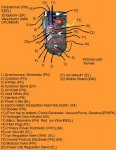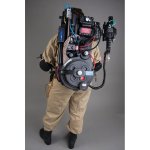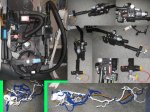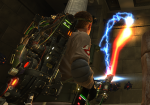No I don't have a source I just assumed I could find it anywhere, but I have found a place where I can buy 40W diodes made by Coherent.
http://www.coherent.com/download/6631/Conduction-Cooled-Package-780-nm-830-nm-Data-Sheet.pdf
I have also found a place that sells 60W diodes but they don't say the manufacture, and they don't say the max voltage input.
I think I have found a solution to driving them but I'm still confused about the voltage.
I know that we run the diodes in our laser at higher current and voltage, but can I do the same with laser bar arrays, if it says 2v Max could I run it at say 2.6V, or would it kill the diode, if it can be run it at a higher voltage do I have to decrease current as I increases voltage?
Everyone would be doing it if they could be found " Anywhere "
There is no point in over running a diode like this power wise , if the diode is stated at its rated power at the recommended drive current , then you should run it at that . The 40W CCP 808nm is specked at <46 (42 typ.) so that would say you could drive the diode to 46A ( diodes safe max current ) and it would output over 40W , at around 42A it would output its rated power of 40W and drop around 2 Volts .
If you wanted to exceed the 46A maximum then you can , but you risk more charnce of damage as there are 19 emitters within quite a small space ( 10mm )
You don't run the diode based on it its voltage , you run it based on its current requirements , the voltage will change over the current range , but a small change in voltage could cause a large change in the current , that's why they are run with constant current drivers , Don't use a voltage source on a diode like this ..
The voltage across the diode is a function of the diode and the current passing though it , trying to increase the voltage ( above its max ) and decrease the current will just cause the power to drop and risk damage to the emitters , Where as in constant current the diode can be happily run , Power from a diode is mainly the function of the current passing though the die and the voltage is partly a function of the " band gap " the die has .
Running the diode from a voltage source would work ( 0 - 2 volts variable ) but you have no precise control over the current and as I said small change in voltage is a big change in current especially on these bigger diodes and you cant regulate both at the exacta same time .
long story short , run the diode it constant current at its recommended value

.








